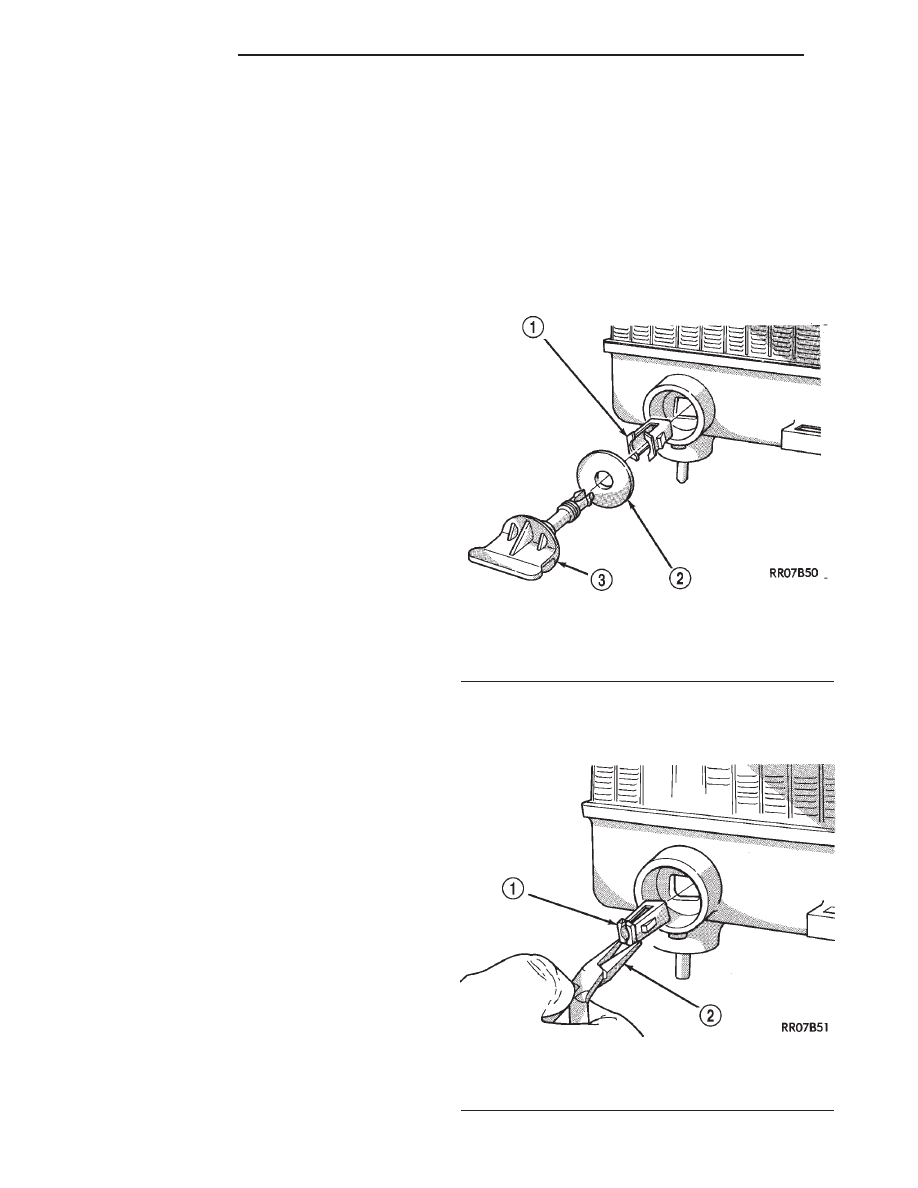Dodge Dakota (R1). Manual - part 276

CAUTION: Radiator pressure testing tools are very
sensitive to small air leaks, which will not cause
cooling system problems. A pressure cap that does
not have a history of coolant loss should not be
replaced just because it leaks slowly when tested
with this tool. Add water to tool. Turn tool upside
down and recheck pressure cap to confirm that cap
needs replacement.
CLEANING
Use only a mild soap and water to clean the radi-
ator cap. Using any type solvent may cause damage
to the seal in the radiator cap.
INSPECTION
Hold cap at eye level, right side up. The vent valve
(Fig. 29) at bottom of cap should open. If rubber gas-
ket has swollen and prevents vent valve from open-
ing, replace cap.
Hold cap at eye level, upside down. If any light can
be seen between vent valve and rubber gasket,
replace cap. Do not use a replacement cap that
has a spring to hold vent shut. A replacement cap
must be the type designed for a coolant reserve/over-
flow system with a completely sealed diaphragm
spring and a rubber gasket. This gasket is used to
seal to radiator filler neck top surface. Use of proper
cap will allow coolant return to radiator.
RADIATOR COOLANT FLOW
CHECK
DIAGNOSIS AND TESTING - RADIATOR
COOLANT FLOW CHECK
Use the following procedure to determine if coolant
is flowing through cooling system.
(1) Idle
engine
until
operating
temperature
is
reached. If upper radiator hose is warm to the touch,
thermostat is opening and coolant is flowing to radiator.
WARNING: HOT, PRESSURIZED COOLANT CAN
CAUSE INJURY BY SCALDING. USING A RAG TO
COVER RADIATOR PRESSURE CAP, OPEN RADIA-
TOR CAP SLOWLY TO FIRST STOP. ALLOW ANY
BUILT-UP PRESSURE TO VENT TO THE RESERVE/
OVERFLOW TANK. AFTER PRESSURE BUILD-UP
HAS
BEEN
RELEASED,
REMOVE
CAP
FROM
FILLER NECK.
(2) Drain a small amount of coolant from radiator
until ends of radiator tubes are visible through filler
neck. Idle engine at normal operating temperature. If
coolant is flowing past exposed tubes, coolant is cir-
culating.
RADIATOR DRAINCOCK
REMOVAL
WARNING: DO NOT LOOSEN RADIATOR DRAIN-
COCK WITH SYSTEM HOT AND PRESSURIZED.
SERIOUS BURNS FROM COOLANT CAN OCCUR.
(1) Unscrew
draincock
stem
(counterclockwise
rotation). When stem is completely unscrewed, pull it
from radiator tank and draincock body (Fig. 26).
(2) Using a pair of needle nose pliers, compress
draincock body and pull straight out of radiator (Fig.
27).
Fig. 26 Draincock Assembly
1 - BODY
2 - SEAL
3 - STEM
Fig. 27 Draincock Body Removal
1 - DRAINCOCK BODY
2 - NEEDLE NOSE PLIERS
7a - 50
5.2L ENGINE
R1
RADIATOR CAP (Continued)